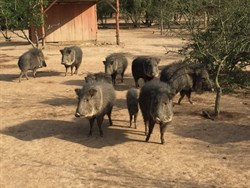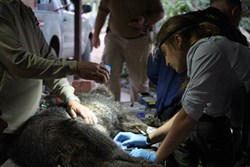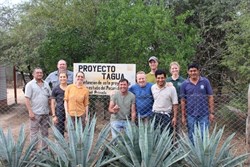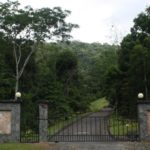Paraguay (1-17 July 2017) – Camille Goblet
 One of the only two landlocked, South American countries, Paraguay is often overlooked in terms of tourism and research, which is perhaps why the Chacoan peccary (Catagonus wagneri) has unfortunately become critically endangered. But spending two weeks working with the enthusiastic and determined staff of the Centro Chaqueño para Conservación e Investigación (CCCI) in Fortin-Toledo, along with a team of curators and veterinarians from the United States, made me believe in the potential to save a species on the brink of extinction.
One of the only two landlocked, South American countries, Paraguay is often overlooked in terms of tourism and research, which is perhaps why the Chacoan peccary (Catagonus wagneri) has unfortunately become critically endangered. But spending two weeks working with the enthusiastic and determined staff of the Centro Chaqueño para Conservación e Investigación (CCCI) in Fortin-Toledo, along with a team of curators and veterinarians from the United States, made me believe in the potential to save a species on the brink of extinction.
The CCCI is a small reserve located in the Gran Chaco region of Paraguay, a region that spans the majority of the western “Region Occidental”. It began under the name “Proyecto Taguá” (the Taguá Project, Taguá being the local name for the Chacoan peccary) in 1985 as a research project and captive breeding program for the species. It has since grown to incorporate many projects that examine the biodiversity present in the region, though the Taguá remains its top priority.
 Currently, the CCCI has a population of 97 animals in captivity, and our goal for our two weeks at the center was to gather health parameters on as many animals as possible. For each immobilized animal we would note the weight, length from snout to tail, and collect hair and blood samples (for DNA analysis. We would also use this time to insert a microchip and ear tag, and trim the hooves (if necessary). It was a male, we would also proceed with an electroejaculation protocol in order to collect semen to perform semen analysis (which has yet to be done in this species), as well as attempt cryopreservation.
Currently, the CCCI has a population of 97 animals in captivity, and our goal for our two weeks at the center was to gather health parameters on as many animals as possible. For each immobilized animal we would note the weight, length from snout to tail, and collect hair and blood samples (for DNA analysis. We would also use this time to insert a microchip and ear tag, and trim the hooves (if necessary). It was a male, we would also proceed with an electroejaculation protocol in order to collect semen to perform semen analysis (which has yet to be done in this species), as well as attempt cryopreservation.
Dr. Juan Campos, the director of the CCCI, would also note the age and general size and health of the animal, making note of candidates for export to U.S. zoos, an important part of maintaining genetic diversity in reserve populations.
Once all the samples were collected and the health assessment was complete, we would administer the reversal and put the animal into a crate to recover before returning them to the pen.
 The days proved to be long and hot (even though it was Paraguayan winter!), and we ended each day exhausted, but satisfied, often partaking in constructive and enthusiastic debates about the future of animal conservation.
The days proved to be long and hot (even though it was Paraguayan winter!), and we ended each day exhausted, but satisfied, often partaking in constructive and enthusiastic debates about the future of animal conservation.
In total our group of nine managed to complete 60 peccary health assessments over the course of 11 working days, generating data that will hopefully be a step towards saving the Chacoan peccary from extinction.

